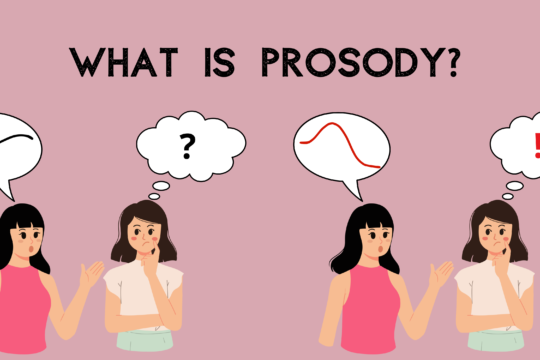The scream as a vector of fear

Zombies, werewolves, vampires, mummies and ghosts are all horrifying creatures that can make us scream… To celebrate beloved Halloween, we discuss how human screams differ from speech and how screams of fear are perceived by humans.
The scream is a vocal communication signal used to express emotions, including fear. In the context of a threat, a scream can be used to frighten a predator, to warn others of a potential danger, to call for help or even attract other predators and thus facilitate escape (Högstedt, 1983; Møller & Nielson, 2010; Arnal, 2016). The scream is a sustained and loud vocalization, distinguishable from speech on several levels. For example, physiologically, when we shout, air passes between the vocal cords with more force than when we speak (Hansen et al., 2017). In addition, the mandible (lower jaw) is lowered, and the tongue is pushed towards the laryngeal cavity (towards the back of the throat), creating a restriction of the airflow. This makes the voice higher-pitched in comparison to the normal speaking voice or other non-verbal vocalizations such as roars (Hansen et al., 2017; Raine et al., 2019).
However, not all screams are the same and they do not convey all the same emotions. Indeed, a research team has found an association between the fundamental frequency -a measure of the speed of oscillation of the vocal cords associated with the pitch of the voice (high/low)—and the perception of fear from screams. Screams with a higher fundamental frequency—which are typically perceived as higher pitched—were perceived as reflecting fear more often (Engelberg et al., 2021).
Another acoustic characteristic would distinguish screams from speech, namely the hoarseness (also called roughness). Arnal and his team (2015) observed, using acoustic analysis, the presence of hoarseness in screams. In addition, another team noted that the “shimmer,” a measure of sound disturbance correlated with the presence of noise and breath in the voice (Teixeira et al., 2013), was higher in distress calls than in aggressive speech or roars (Raine et al., 2019). To study the relationship between hoarseness and the feeling of fear, Arnal and his colleagues (2015) asked participants to rate the degree of fear induced by more or less hoarse screams and vocalizations. They observed that hoarser screams were perceived as more frightening than less hoarse screams. Also, the louder the screams, the faster the participants responded. These results suggest that hoarseness can increase the level of perceived fear, but also make it possible to react more quickly to a perceived danger (Arnal et al., 2015). Finally, another experiment by Arnal and colleagues (2015) suggested that hoarse sounds could induce activity in brain networks involved in danger detection and fear. During this experiment, participants listened to sounds varying in hoarseness (e.g., normal voices and screams) while they were in a magnetic resonance imaging (MRI) machine. Unpleasant sounds such as screams induced more activity than neutral sounds in the primary auditory cortex as well as in the amygdala, a brain region associated with fear processing (Ledoux, 2003; Tovote et al., 2015 ; Garcia , 2017).
Interestingly, the hoarse character of the scream has been found in artificial alarms sounds such as car horns (Arnal et al., 2015) as well as in horror film soundtracks (Trevor et al., 2020)! Hoarseness could therefore signal danger in both human vocalizations and artificial sounds.
It is important to note that the interpretation of screams depends not only on the acoustic characteristics of the voice, but also on the context. Indeed, a research team (Anikin et al., 2020) observed that the same screams can be perceived as reflecting a positive emotion when presented in a pleasant context (e.g., vocalization of someone who has won the lottery), but as reflecting a negative emotion when presented in an unpleasant context (e.g., vocalization of a person being chased by a zombie).
Finally, the number of studies that focused on non-verbal vocalizations remains relatively low, thus several elements remain to be clarified and replicated. For example, are the screams of children and adults perceived in the same way? Is hoarseness specific to human screams or does it also characterize other species’ cries? What neural mechanisms can induce fear? Nevertheless, the results of the few studies discussed in this post suggest that screams have specific acoustic properties that contribute to scaring people around. So, if you come face to face with a ghost on October 31st, hopefully there’s someone nearby to hear you scream of distress and come to your rescue!
Happy Halloween everyone!
Further readings:
References:
Anikin , A., Pisanski , K., & Reby , D. Do nonlinear vocal phenomena signal negative valence or high emotion intensity? Royal Society Open Science, 7 : 201306.
Arnal , LH (2016). The human cry: a particular acoustic niche. Medicine /Sciences, 32 (6-7): 539–541.
Garcia, R. (2017). Neurobiology of fear and specific phobias. Learning & Memory, 24 (9), 462–471.
Hansen, JHL, Nandwana , MK, & Shokouhi , N. (2017). Analysis of human scream and its impact on text-independent speaker verification. The Journal of the Acoustical Society of America, 141 , 2957–2967.
LeDoux, J. (2003). The Emotional Brain, Fear, and the Amygdala. Cellular and Molecular Neurobiology, 23 (4-5):727-738.
Moller , AP, & Nielson, JT (2010). Fear screams and adaptation to avoid imminent death: effects of genetic variation and predation. Ethology Ecology & Evolution, 22 : 183–202.
Raine, J., Pisanski , K., Bond, R., Simner , J., & Reby , D. (2019). Human roars communicate upper-body strength more effectively than do screams or aggressive and distressed speech. PLoS ONE, 14 (3), Article e0213034.
Teixeira, JP, Oliveira, C., & Lopes, C. (2013). Vocal Acoustic Analysis—Jitter, Shimmer and HNR Parameters. Procedia Technology, (9):1112-1122.
Tovote , P., Fadok , JP, & Lüthi , A. (2015). Neural circuits for fear and anxiety. Nature Reviews Neuroscience, 16 (6), 317–331.
Trevor, C., Arnal , LH, & Frühholz , S. (2020) Terrifying film music mimics alarming acoustic feature of human screams. Journal of the Acoustical Society of America, 147 (6 ):EL 540.



